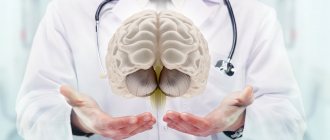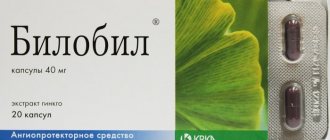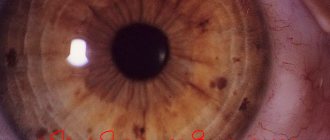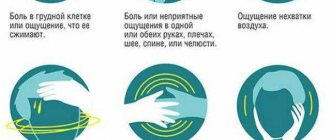Cerebral infarction, or, as doctors call it, ischemic stroke, is one of the most dangerous brain lesions. However, if ten years ago it was possible to give up on a patient with this disease (he either died or lost his ability to work forever), now such patients have some chance of a normal life after a stroke.
A cerebral infarction or ischemic stroke is a blockage of blood vessels in the brain in one way or another, due to which an area of the brain is left without blood supply and dies.
Development mechanism
Acute cerebrovascular accident is formed as a result of the influence of one or more key factors.
Among them:
- Atherosclerosis. The scourge of modern man. The disease occurs in two forms. Formation of cholesterol plaques on the walls of arteries. The result of excess circulation of fatty compounds in the bloodstream.
It occurs frequently, the process is determined by nutrition, lifestyle, and to a large extent also by metabolic characteristics. Which are inherited from parents and ancestors going back generations.
Correction is carried out at an early stage, then it is more difficult to cope with the problem.
The second possible form is spontaneous vascular stenosis, arterial spasm.
As a rule, this is the result of an irrepressible craving for smoking and consumption of large amounts of tobacco. Treatment in such a situation comes down to giving up the bad habit and using drugs to normalize microcirculation.
- Thrombosis. The essence remains the same. The lumen of the vessel supplying the brain becomes insufficiently wide. However, the reason is different. If in the first case a plaque forms, which grows gradually, in this situation the cause of the disorder is a blood clot. A blood clot containing fibrin.
Depending on the size, the formation can block part of the artery or completely block it. In the latter case, a hemorrhagic form of cerebral infarction (stroke) may develop. When the vessel ruptures, hemorrhages begin, and a hematoma occurs.
This type of condition is much more dangerous than ischemic. When tissue death occurs as a result of insufficient nutrition.
- Blocking the supply of oxygen to the brain. As a rule, it is observed in cases of poisoning with toxic substances: hydrocyanic acid vapor, carbon monoxide, and under the influence of neurotoxins. All body systems suffer. Often the patient dies before a heart attack occurs. But not always.
Then the process moves progressively. Violation of trophism (nutrition) as a result of small lumen of blood vessels leads to cerebral ischemia.
How pronounced depends on what the hemodynamics (blood flow) is at the moment. The more blood flows in, the less noticeable the abnormalities are. In case of total blockage, rupture of the vessel and heavy bleeding cannot be avoided.
After a disorder of cerebral nutrition and breathing, a period of pronounced clinical symptoms begins. Depending on which area is most affected, focal symptoms develop.
There is always a neurological deficit: problems with speech, vision, hearing or intelligence. The correction is carried out as part of rehabilitation; this process lasts for years.
The end result is permanent disruption of brain activity or death of the patient. A stroke never goes away without consequences. “Correcting” the results of the violation will take a long time and persistently, not always quite successfully.
Classification
Cerebral infarction and stroke are no different (they are equivalent concepts), therefore the classification will be the same. The pathological process can be divided on two grounds.
The first and most applicable in clinical practice is the type of disorder, its fundamental features.
- Ischemic type. Occurs especially often. The essence is a malnutrition of a particular area without signs of vascular destruction. However, this does not mean at all that ischemic cerebral infarction is a harmless phenomenon.
Depending on the area of the lesion, it can be fatal or make the patient disabled, eking out a vegetative existence.
- Hemorrhagic form. Mainly, it develops in people prone to the formation of blood clots in the body or in people with hypertension. The basis is the same: acute nutritional disorder of cerebral structures.
The difference is different. The integrity of the blocked artery is compromised. It ruptures and profuse bleeding begins. This is deadly.
An additional damaging factor arises. The space in the skull is extremely limited. Large volumes of liquid connective tissue lead to compression of the brain as a result of the formation of a hematoma.
If it is not eliminated promptly, the risk of death increases significantly.
The second way to classify cerebral infarction is to determine the extent of the lesion.
Then there are three more forms:
- Finely focal. As the name suggests, one area of nerve tissue is affected, usually small. Symptoms are limited to manifestations of local neurological deficit.
Any one area of higher nervous activity is affected. Most often not completely. For example, speech in certain aspects, vision and others.
A special case is lacunar cerebral infarction. When many small dead areas form throughout the cerebral structures.
- Intermediate form. Accompanied by the same lesion at the level of a small lesion, but the area of deviation is larger. Structural changes are more dangerous, the clinical picture is broader.
This is the main type of cerebral infarction, and doctors and patients encounter it most often.
- Finally, the extensive form. The lesion affects significant areas of cerebral structures.
In the vast majority of cases, the patient dies or remains deeply disabled with severe neurological deficits. There is no talk of any legal capacity.
There are isolated cases of more or less high-quality recovery after such massive damage to nerve tissue. At the level of statistical error.
Both classifications are used to code the diagnosis and more thoroughly describe the essence of the pathological process.
This allows you to plan treatment tactics in each specific case, based on known factors.
Cerebral infarction: what it is, symptoms and consequences, treatment tactics
The human brain is a truly unique organ.
All life processes are controlled by him. But, unfortunately, the brain is very vulnerable to all kinds of damage, and even seemingly minor changes in its functioning can lead to serious and irreversible consequences.
Let's talk about cerebral infarction - what it is and how ischemic stroke manifests itself.
Description
The human brain consists of highly specialized tissue that has a constant need for large amounts of oxygen , the lack of which causes negative changes.
Cerebral infarction (or ischemic stroke) is an ischemic lesion of areas of the brain that occurs as a result of circulatory disorders. There is also a hemorrhagic cerebral infarction, but we will talk about it in another article.
Gray matter is the most sensitive to oxygen starvation; the cells of the cerebral cortex that it forms die off within a few minutes after the onset of hypoxia.
Prevalence
Ischemic cerebral infarction is one of the most common diseases in the world . Under the age of 40, it is rare; on average, it occurs 4 times per 100 people. After 40, this figure increases significantly and is already 15 percent of the population.
People who have crossed their fifties are even more likely to suffer from the consequences of this disease - 30%. After 60 years of age, cerebral infarction occurs in 50% of people.
Classification and differences
Depending on the reasons that led to cerebral infarction, experts usually distinguish between several of its forms:
- Atherothrombotic;
- Cardioembolic;
- Hemodynamic;
- Lacunarnaya;
- Hemorheological.
Let's look at each of the varieties.
Atherothrombotic
The atherothrombotic form of ischemic stroke develops with atherosclerosis of large or medium cerebral arteries .
If the vascular lumen is closed by an atherosclerotic plaque that forms a thrombus, the risk of developing a condition such as aorto-arterial embolism increases.
This form of cerebral infarction is characterized by a gradual development . The symptoms of the disease are slowly but surely increasing. Quite a few days may pass from the onset of the disease to the onset of pronounced symptoms.
Cardioembolic
This form of stroke occurs due to partial or complete blockage of arteries by blood clots . Often this situation occurs with a number of cardiac lesions that occur when parietal blood clots form in the heart cavity.
Unlike the previous form, cerebral infarction caused by thrombosis of the cerebral arteries occurs unexpectedly while the patient is awake.
The most typical area affected by this type of disease is the area of the blood supply to the middle artery of the brain.
Hemodynamic
It occurs against the background of a sharp decrease in pressure or as a consequence of a sudden decrease in the minute volume of the cardiac cavities . An attack of hemodynamic stroke can begin either abruptly or progressively.
Physical activity does not affect the origin of this form of heart attack: at the time of the attack, the patient can both physically rest and actively move.
Lacunar
the middle perforating arteries are damaged . It is believed that lacunar stroke often occurs when the patient's blood pressure is high.
The lesions are localized mainly in the subcortical structures of the brain.
Hemorheological
This form of stroke develops against the background of changes in normal blood clotting parameters.
Depending on the severity of the patient’s condition, stroke is classified into three degrees:
- light;
- average;
- heavy.
Heart attacks are also divided into classification according to the area of localization of the affected area . The patient may have damage:
- in the area of the inner side of the carotid artery;
- in the main artery, as well as in various vertebrates and their branches;
- in the area of the cerebral arteries: anterior, middle or posterior.
Stages
Official medicine distinguishes 4 stages of the disease.
The first stage is the acute course of the disease. The acute phase of a stroke lasts three weeks from the moment of impact. Fresh necrotic changes in the brain form the first five days after the attack.
The first stage is the most acute of all existing ones. During this period, the cytoplasm and karyoplasm shrink, and symptoms of perifocal edema are noted.
The second stage is the period of early recovery. The duration of this phase is up to six months, during which pannecrosis changes occur in the cells.
A recurrent process of neurological deficiency often occurs. Near the location of the affected lesion, blood circulation begins to improve.
The third stage is the period of late recovery. Lasts from six months to a year after a cerebral infarction. During this time, glial scars or various types of cystic defects develop in the patient’s brain.
The fourth stage is the period of residual manifestations of the infarction. It begins 12 months after the stroke and can continue until the end of the patient’s life.
Causes
In fact, the reasons why one or another form of cerebral infarction develops are largely the consequences of various pathological conditions of the human body.
But among the main causes of stroke are :
- atherosclerotic changes;
- the presence of thrombosis in the veins;
- systematic hypotension;
- disease with temporal arteritis;
- damage to large intracranial arteries (Moya-Moya disease);
- subcortical encephalopathy of a chronic nature.
People prone to obesity, people with diabetes, and chronic alcoholics are also at risk of having a stroke.
Smoking provokes thrombosis, so the bad habit must be forgotten if health problems are suspected.
Taking hormonal contraceptives also slightly increases the risk of cerebral infarction.
Watch the video that talks about the main causes of the disease:
Danger and consequences
The disease is extremely dangerous. In 40% of cases it ends in death in the first hours after the attack. However, with timely first aid, the patient is able not only to survive, but also to subsequently lead normal life activities.
The consequences of a cerebral infarction can be very different, ranging from numbness of the limbs to complete paralysis and even death.
Symptoms and signs
a stroke immediately makes itself felt: a person suddenly begins to experience unbearable headaches, which most often affect only one side, the skin of the face during an attack acquires a pronounced red tint, convulsions and vomiting begin, breathing becomes hoarse.
It is noteworthy that the seizures affect the same side of the body as the side of the brain that was affected by the stroke . That is, if the location of the lesion is on the right side, then the cramps will be more pronounced on the right side of the body and vice versa.
If the left side is affected, the patient will suffer from mental disorders; if the right side is affected, the speech apparatus will suffer.
However, there are cases when the attack as such is completely absent , and only some time after the stroke, which the patient might not even suspect, numbness is felt in the cheeks or hands (one of them), the quality of speech changes, and visual acuity decreases.
Then the person begins to complain of muscle weakness, nausea, and migraines. In this case, a stroke can be suspected if there is a stiff neck, as well as excessive muscle tension in the legs.
How is diagnostics carried out?
To establish an accurate diagnosis and prescribe effective treatment, several studies are used : MRI, CT, EEC, CTG, Dopplerography of the carotid artery.
In addition, the patient is prescribed a test for the biochemical composition of the blood, as well as a blood test for its coagulability (coagulogram).
First aid
The first measures to prevent irreversible consequences and death should begin in the very first minutes after the attack.
It is the first 180 minutes that are decisive in the patient’s life; this period of time is called the “therapeutic window”.
Procedure:
- Help the patient lie down on a bed or any other surface so that the head and shoulders are slightly higher than the level of the body. It is extremely important not to rub the victim too hard.
- Get rid of all items of clothing that compress the body.
- Provide maximum oxygen, open windows.
- Apply a cold compress to your head.
- Use heating pads or mustard plasters to support blood circulation in the extremities.
- Rid the oral cavity of excess saliva and vomit.
- If the limbs are paralyzed, then you should rub them with solutions based on oil and alcohol.
about cerebral infarction and the importance of providing proper first aid:
Treatment tactics
A cerebral infarction is an emergency that requires immediate hospitalization .
In a hospital setting, the main goal of treatment is to restore blood circulation in the brain , as well as prevent possible cell damage. In the first hours after the onset of the pathology, the patient is prescribed special drugs whose action is aimed at dissolving blood clots.
In order to inhibit the growth of existing blood clots and prevent the formation of new ones, anticoagulants , which reduce the degree of blood clotting.
Another group of drugs that are effective in treating stroke are antiplatelet agents . Their action is aimed at gluing platelets. The same medications are also used to prevent recurrent attacks.
In some cases, surgery is required to remove the inner wall of the carotid artery affected by the plaque.
What's the prognosis?
People who have had a cerebral infarction have a good chance of recovering and even making a full recovery. If the patient’s condition remains stable within 60 days after the attack, this means that he will be able to return to normal life within a year.
Naturally, the patient’s age and the presence of other diseases, including chronic ones, play a role in this issue. The main thing is to believe in a positive perspective!
In order to prevent this disease from affecting you, you need to adhere to the right lifestyle , nutrition, exercise, avoid stressful situations, monitor your body weight, and give up bad habits.
Source: //oserdce.com/sosudy/insulty/infarkt-mozga.html
Symptoms
The clinical picture depends on the extent of the lesion and the location of the cerebral infarction.
There are two large groups of manifestations. The first is general. The second is local or local.
If we talk about generalized points:
- Inability to properly navigate in space. The person takes a forced position lying on his side. This is the only way to partially correct the negative feeling.
- Headache. Usually extremely intense. Pulsating. But the location of the discomfort does not always correspond to the area where tissue death occurred. The symptom does not go away on its own until the acute phase of the pathological process is over or medical care follows.
- Impaired coordination of movements. Normally, the cerebellum “cuts off” excess activity. Therefore, everyone moves plastically and changes the nature of their motor skills depending on the situation.
With the development of a cerebral infarction, cerebral tissues receive chaotic signals. Simply put, the body has no time to solve problems such as ensuring coordination of movements. When the cerebellum itself is damaged, the symptom is even more pronounced.
- Nausea, vomiting. Usually at the beginning of an emergency. This can be dangerous, especially if the patient is unconscious.
- Fainting. These are even more alarming symptoms. Because with almost a 100% guarantee they indicate critical violations that progress rapidly.
These symptoms are present in every patient without exception. Depending on the severity, variations are possible.
Focal manifestations are more variable. In total, several functional areas of cerebral structures are distinguished.
Frontal lobes
Defeat leads to behavioral and intellectual impairments. To be more specific:
- Foolishness, frivolity, inappropriate cheerfulness or, on the contrary, a depressive mood. Inappropriate reactions to stimuli. In this case, the patient himself is not aware of the problem. Sudden changes in emotional state are possible.
- Paralysis, paresis. One-sided.
- Intellectual deficit. The patient cannot perform complex actions, the speed of thinking decreases. And in an advanced case, a critical defect is discovered when a person becomes helpless.
- Epileptic episodes with loss of consciousness and convulsions.
- Loss of ability to speak.
Temporal lobes
They are responsible for the perception of verbal information, partly memory, and some other aspects.
- Hearing loss on one or both sides. Happens frequently.
- Hallucinations. Like the voices in your head. At the same time, the patient clearly realizes the illusory nature of such a manifestation.
- Aphasia. Loss of speech function.
- Epileptic seizures. As with damage to the frontal lobe. They may also be longer.
- Memory problems. Focal symptoms of such localization are characterized by various amnesias. This is a hallmark of damage to the temporal part of the brain.
Parietal lobes
They control tactile sensations, as well as some intellectual functions and feelings.
- Loss of smell on one side.
- Inability to identify an object by touch with eyes closed. Even a well-known one.
- In especially severe cases, the patient does not perceive his own body as a single whole. For example, an arm or some segments of it may appear to be missing.
- Loss of ability to handle numbers and read.
Occipital lobes
The visual analyzer is located here. Higher nervous activity is the main “guarantor” of the ability to see. The eye itself cannot process data.
Symptoms corresponding to:
- Mice in sight. Dots flying back and forth. In large quantities.
- Blackouts, scotomas. They look like black spots around the periphery of the picture. Closing part of the review.
- Problems with focusing on the desired point. Double vision.
- A sharp drop in visual acuity.
- Complete loss of ability to see. Usually, even with a large area of damage, it is possible to restore at least part of the function through rehabilitation.
- Impaired perception of the size of an object, distances to it.
Extrapyramidal system
Represented by the cerebellum. Mostly problems arise with motor activity. Motor skills are uncoordinated, the patient cannot normally navigate in space due to severe dizziness.
Limbic system
When this area is damaged, a person loses the ability to learn, and there may be a complete loss of sense of smell.
Brain stem
The defeat is almost always fatal. There are problems with breathing and cardiac activity. Thermoregulation is disrupted. Even minor dysfunctions in this area often result in the death of a person.
Key symptoms are assessed by doctors during the initial examination. This allows us to better understand the nature of the violation.
A cerebral infarction is not different from a stroke in this aspect; the processes are also identical in other respects.
How is the diagnosis made?
Diagnosis is based on the clinical picture and various imaging studies such as CT scan, MRI, Doppler sonography and angiography. Examination of lymphocytes and fundus may also be helpful in diagnosis.
Protein C studies, specific antibodies, C-reactive protein, and homocysteine were used to elucidate the etiology of cerebral infarction.
If ischemic cerebral infarction can be cured completely, it will not cause any discomfort in the future.
The following diseases should be considered in the differential diagnosis:
- A brain tumor. There are usually pre-existing symptoms such as headache and dizziness.
- Chronic subdural hematoma - evidence of injury, progressive development of symptoms, computed tomography.
- Viral meningoencephalitis - there are neurological syndromes with corresponding changes in the cerebrospinal fluid.
Causes
Development factors are standard and almost always repeated:
- Atherosclerosis. It has already been said about it. Blockage of blood vessels with cholesterol plaques or narrowing of the arteries, impaired blood flow and, as a result, acute death of nerve tissue.
- Toxic damage accompanied by a disorder of cellular respiration. It is relatively rare. But this is also possible.
- Thrombosis. Blockage of a vessel by a blood clot.
- A jump in blood pressure. Accompanied by critical overload and often rupture of the blood supply structure. It is considered one of the most common reasons. Almost always adjacent to atherosclerosis.
- Fragility, insufficient elasticity of the walls of blood vessels. For example, against the background of diabetes or other disorders.
There are a huge number of risk factors: obesity, smoking, alcohol consumption, insufficient or excessive physical activity. And others.
A specialist in neurology must understand the entire array. It is also possible to attract a doctor whose field of activity is in the field of heart and vascular diseases.
Surgical therapy
Surgical interventions depend on atherosclerotic plaques located at the origin of the internal carotid artery, with the intervention called carotid endarterectomy. Candidates for this type of intervention are those patients who have several risk factors for the development of atherosclerosis, ischemia, and the likelihood of stenosis is at an optimal level. The risk of pathology on the internal carotid artery and perioperative risk is below 6%. In this case, the risk of adverse events from surgery is lower than the risk of future ischemic stroke.
Patients with carotid artery stenosis report improvement in 70-99% of cases. In contrast, if a patient has asymptomatic carotid stenosis and several related risk factors, it is recommended not to undergo surgery because the perioperative risks are outweighed.
Ischemic stroke occurs due to a decrease in blood in the brain tissue, in most cases blockage by a blood clot, spasm or vascular tone of large vessels of the brain. As a result, ischemic stroke occurs due to bleeding in the brain tissue.
Important risk factors for ischemic cerebral stroke are: hypertension,
- cardiovascular diseases,
- diabetes,
- smoking,
- hyperlipidemia.
Atherosclerosis is one of the main causes of acute ischemic pathologies.
First aid
You need to act quickly even if you suspect a cerebral infarction.
The algorithm is simple:
- Call an ambulance. There is no way to help on your own.
- Make the patient sit down. Turn your head to the side. Raise your legs a little and place them on a bolster. This will allow you to adjust hemodynamics. And changing the position of the neck will prevent choking on vomit in the event of loss of consciousness.
- It is important that the patient calms down. Emotional reactions will only make things worse. You can't move.
- Open a window or window to ensure normal ventilation of the room.
- Giving any drugs is prohibited. Because the condition may worsen.
- Eating and drinking are also prohibited. Possible fainting and loss of stomach contents. Is it dangerous.
- It is necessary to constantly monitor blood pressure, heart rate, and breathing.
Upon arrival of the ambulance, report the victim's condition briefly and clearly. If possible, help with transportation and accompany the person to the hospital.
Diagnostics
In an acute condition, there is no time for a full examination. A visual assessment, routine neurological examination, testing of basic reflexes, and a brief questioning of the patient if he is conscious are necessary.
As a rule, everything is obvious. After providing first aid and stabilizing the situation, you can move on to searching for the causes of the pathological process.
The list of events is approximately as follows:
- Measures blood pressure and heart rate over 24 hours. Daily monitoring.
- Blood tests: general, biochemical, sugar.
- Urine examination.
- ECG and ECHO. Assessment of the functioning of the heart and blood vessels.
- Dopplerography of the arteries of the brain and neck. Duplex scanning.
- If necessary, a lumbar puncture is performed. To collect cerebrospinal fluid and examine it for blood.
- Electroencephalography. Detecting brain activity in specific areas.
If necessary, the list is expanded.
Ischemic therapy
Currently, in cases of progressive ischemic stroke, intravenous heparin therapy is used for 3-5 days.
After dosing, administer a bolus of 3000-5000 units of heparin iv followed by an infusion of 600-1000 units per hour and continuous monitoring.
The international norm is about 3 units of heparin. If this medication is stopped, switch to long-term oral warfarin.
A low-molecular-weight heparin called nadroparin, which is administered subcutaneously for 10 days, is being studied. But so far it has not found widespread use.
Treatment
Therapy is strictly in a hospital setting. A group of medications is prescribed:
- Antiplatelet agents for ischemic lesions. Aspirin and its analogues. Related, but more powerful remedies based on heparitis and other substances are possible. Pentoxifylline. Restore blood flow and nutrition.
- Nootropics. Glycine, Phenibut. Accelerate regeneration.
- Cerebrovascular. Piracetam. Actovegin. To stabilize the supply of nerve fibers with necessary substances.
- Antihypertensive. If there is an increase in blood pressure. Beta blockers (Metoprolol), calcium antagonists (Diltiazem), diuretics are mandatory (Furosemide, if necessary - Mannitol). To reduce the load on the brain and prevent swelling.
The hemorrhagic form requires removal of the hematoma. Promptly.
In the future, everything is decided by rehabilitation and its quality. Recovery takes from 12 to 24 months. The most active reorientation of the brain occurs in the first year. Then the results are not so noticeable.
Read more about rehabilitation after a stroke in this article.
Lifestyle correction is indicated: quitting smoking, alcohol, limiting salt (up to 6 grams), sugar, eliminating fatty foods from the diet. Also optimizing physical activity.
Occlusion at the level of the cerebellar artery.
Symptoms include:
- deafness,
- noise in ears,
- facial nerve paralysis,
- associated movements of the eyeballs,
- dizziness and nystagmus,
- cerebellar ataxia,
- loss of sensation,
- Horner's syndrome.
The arteries of the circle of Willis, the middle cerebral artery and the basilar and spinal arteries, as well as small branches, penetrate to a depth of 300 µm into the white matter of the brain and brain stem. Thrombosis of these branches is most often caused by high blood pressure. A heart attack causes sudden disruption of the nervous system, but after several weeks or months, recovery may be complete. It accounts for just under a quarter of all strokes.
Consequences
The main consequence of cerebral infarction is persistent focal neurological deficit. With the right amount of effort, it is possible to carry out a correction and get rid of the problem. Mostly.
There is also a high probability of death and severe disability. Cerebral infarction caused by thrombosis of the cerebral arteries or other causes almost always recurs without correction.
Each next episode is harder than the previous one. The risks of death are becoming higher. Therefore, therapy must be comprehensive.












